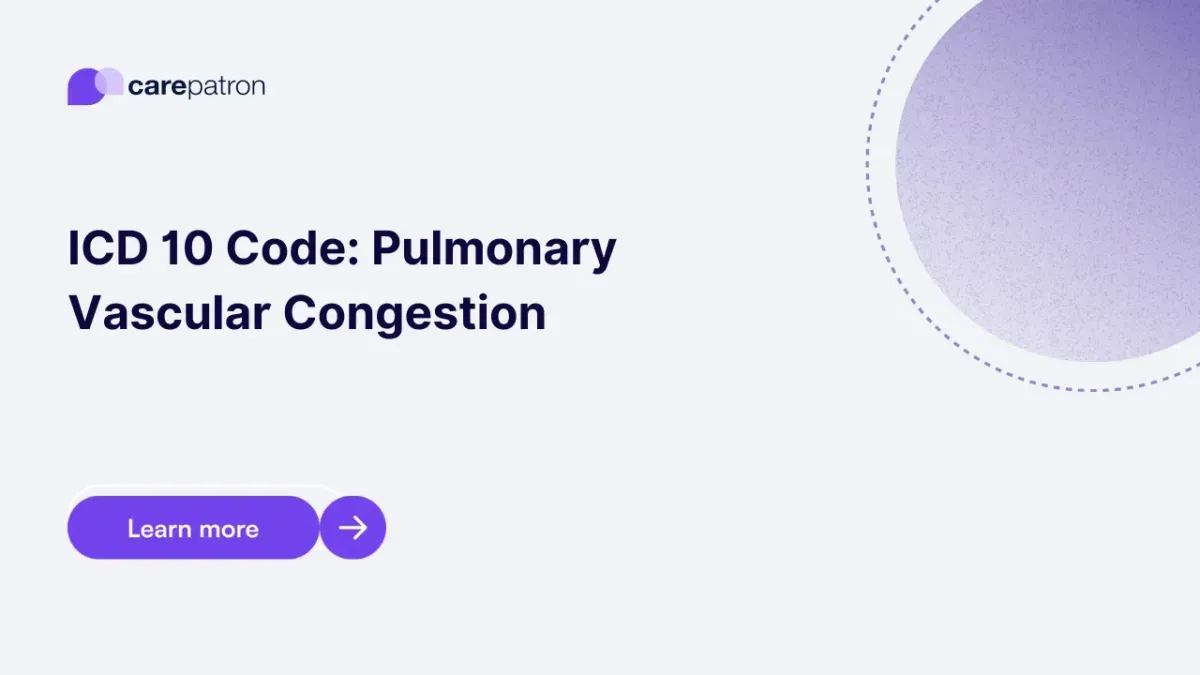
Pulmonary Vascular Congestion ICD-10-CM Codes | 2023
Explore ICD-10 codes for Pulmonary Vascular Congestion - the key to accurate diagnosis and billing. Learn how to code this condition.
Use Code
Commonly asked questions
Use a Pulmonary Vascular Congestion ICD code when diagnosing conditions associated with pulmonary congestion, such as heart failure, pneumonia, or pulmonary edema.
Yes, Pulmonary Vascular Congestion diagnoses are billable if they are supported by clinical documentation and comply with insurance or healthcare provider billing policies.
Treatment for Pulmonary Vascular Congestion depends on the underlying cause. It may include addressing heart conditions, administering diuretics to reduce fluid accumulation, providing oxygen therapy to improve oxygen levels, and using medications to manage related issues.
EHR and practice management software
Get started for free
*No credit card required
Free
$0/usd
Unlimited clients
Telehealth
1GB of storage
Client portal text
Automated billing and online payments
